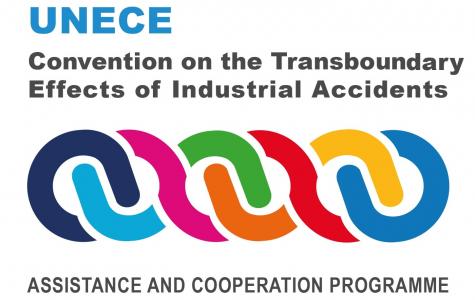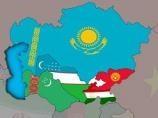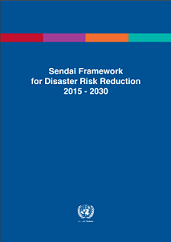
Background
The project on “National Policy Dialogues for Industrial Safety in Central Asia (Phase I: Launch)” is planned to be implemented in 2020-2022 by Kazakhstan, Kyrgyzstan, Tajikistan, Turkmenistan and Uzbekistan, under the auspices of the UNECE Convention on the Transboundary Effects of Industrial Accidents (Industrial Accidents Convention) and thanks to financial support from the Russian Federation. It builds and follows up on the work on enhancing capacity of the Central Asian countries which was previously conducted under the project on “Strengthening industrial safety in Central Asia through the implementation of and accession to the UNECE Convention on the Transboundary Effects of Industrial Accidents”. This latter project, which was implemented in 2016-2019, identified the needs and challenges faced by the beneficiary countries in terms of enhancing their industrial safety, progressing in their implementation of the Convention and acceding to (relevant for the four non-Parties, notably Kyrgyzstan, Tajikistan, Turkmenistan and Uzbekistan). The project on “National Policy Dialogues for Industrial Safety in Central Asia (Phase I: Launch)” was designed and is being implemented to address these needs, and support countries in overcoming the challenges faced.
The leaflet of the project on “National Policy Dialogues for Industrial Safety in Central Asia (Phase I: Launch)” is available in (English, Russian)
Project Objective
The project’s objective is to address the need to enhance industrial safety in Central Asia, through activities directed at strengthening respective governance mechanisms and policy making, by means of launching a process of National Policy Dialogues on Industrial Safety. It is designed to effectively assist beneficiary countries by providing a framework for dialogue in view of advancing policy reforms and enhancing their environmental governance, disaster resilience and industrial safety.
Project Beneficiaries

The project beneficiaries are all five Central Asian countries: Kazakhstan, Kyrgyzstan, Tajikistan, Turkmenistan and Uzbekistan.
While Kazakhstan was the only Party to the Convention in Central Asia at the moment of the project's start (August 2020), all five countries actively benefit from activities implemented under the Convention's flagship Assistance and Cooperation Programme. The main target groups are government officials and experts from the national competent and enforcement authorities in the area of industrial accidents prevention, preparedness and response.
The project will also involve representatives of the private sector, civil society and academia.
Expected Results
It is expected that the project will result in:
- Strengthened expert and administrative capacities of all five Central Asian countries, specifically in industrial safety and environmental protection more broadly, through well-established and locally owned coordination mechanisms, such as National Policy Dialogues, that will be functional after the project is finished;
- National Policy Dialogues launched, involving state authorities responsible for industrial safety, environment, internal affairs, civil defense, emergency situations, among other areas, as well as local authorities, industries and other stakeholders;
- Enhanced inter-institutional coordination within the beneficiary countries at both national and sub-regional levels;
- Harmonized understanding of technological disaster risk and enhanced industrial safety in the beneficiary countries as a result of the provided advisory services;
- More beneficial conditions for human health and the environment for local communities and the populations of the beneficiary countries in view of the increased levels of industrial safety, information sharing, disaster risk reduction and industrial accident prevention and preparedness.
Key Project Activities
The project’s key activities are envisaged to take place in 2021. It is planned to conduct outreach missions and consultations on the launch of National Policy Dialogues with the governments of the five beneficiary countries. Additionally, advisory services on reviewing national policies and legislation will be provided. The advisory services are intended to ensure alignment with the UNECE Industrial Accidents Convention and national legal requirements, and other related policy areas (including disaster risk reduction) in all beneficiary countries.
Meetings
- Introductory meeting on reviewing national policies and legislation on industrial safety (Online, 10 March 2021)
- Meeting on reviewing industrial safety-related policies and legislation of Tajikistan (Online, 24 June 2021)
- Meeting on reviewing industrial safety-related policies and legislation of Kyrgyzstan (Online, 8 July 2021)
Linkages to the 2030 Agenda for Sustainable Development and Sendai Framework for Disaster Risk Reduction for 2015-2030
The project seeks to support beneficiary countries in achieving relevant Sustainable Development Goals (SDGs) through a coordinated and well-established process of National Policy Dialogues.
Notably, it will help in the implementation of the SDGs 3, 6, 9, 11, 12, 13 and 16, including the below targets:

Target 3.9 By 2030, substantially reduce the number of deaths and illnesses from hazardous chemicals

Target 6.3 By 2030, improve water quality by reducing pollution, eliminating dumping and minimizing release of hazardous chemicals and materials, halving the proportion of untreated wastewater and substantially increasing recycling and safe reuse globally

Target 9.4. By 2030, upgrade infrastructure and retrofit industries to make them sustainable, with increased resource-use efficiency and greater adoption of clean and environmentally sound technologies and industrial processes, with all countries taking action in accordance with their respective capabilities

Target 11.b. By 2020, substantially increase the number of cities and human settlements adopting and implementing integrated policies and plans towards inclusion, resource efficiency, mitigation and adaptation to climate change, resilience to disasters, and develop and implement, in line with the Sendai Framework for Disaster Risk Reduction 2015-2030, holistic disaster risk management at all levels

Target 12.4 By 2020, achieve the environmentally sound management of chemicals... throughout their life cycle, in accordance with agreed international frameworks...

Target 13.1 Strengthen resilience and adaptive capacity to climate-related hazards and natural disasters in all countries

Target 16.6 Develop effective, accountable and transparent institutions at all levels

Furthermore, through the establishment of the National Policy Dialogues as coordination mechanisms addressing, inter alia, technological/chemical accident risks, the Project will contribute to achieving the objectives and four priorities of the Sendai Framework for Disaster Risk Reduction 2015-2030, notably:
Priority 1: understanding disaster risk,
Priority 2: strengthening disaster risk governance to manage disaster risk,
Priority 3: investing in disaster risk reduction for resilience, and
Priority 4: enhancing disaster preparedness for effective response.